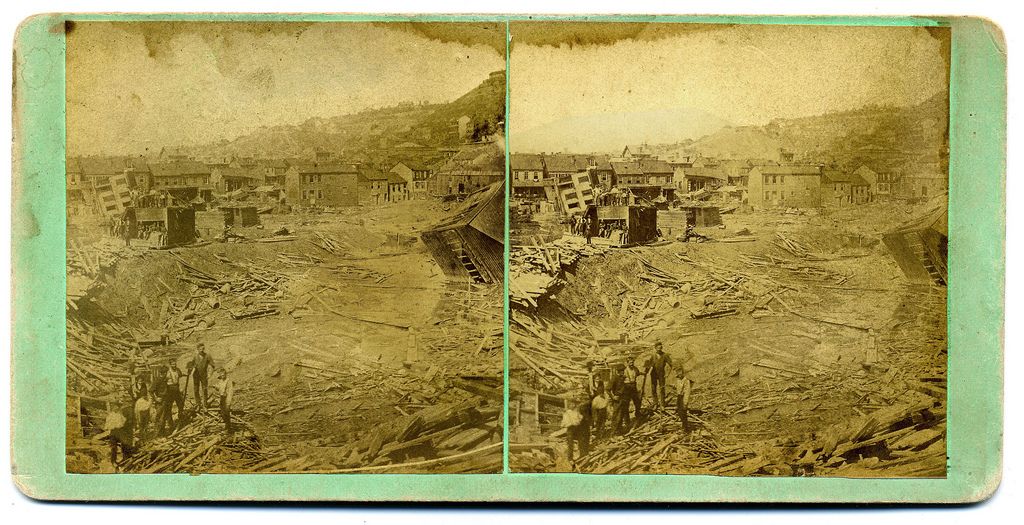About
At the end of the 19th century, Johnstown, Pennsylvania was just a small mining town, unknown to practically everyone across the country. But one rainy day in 1889 changed everything.
According to most accounts, the rain started and just wouldn't stop. It filled the streets and was bigger than the average yearly flood the town had dealt with every year as far back as everyone could remember. When the rains didn't let up, the townspeople began to panic when word spread that the dam near the town was beginning to burst. Millions of gallons of water poured down into the town.
The flood became one of the biggest disasters the United States had ever seen. More than 2,200 people died and fires raged around the outskirts of the submerged town. Although the flood was a tragedy, it sparked one of the first relief efforts led by Clara Barton and the newly formed American Red Cross.
The dam was part of a complex compromising an elite private club, with its members including Gilded Age tycoons such as Henry Clay Frick and Andrew Carnegie. Public outrage was stoked by the fact that club members knew the dam had to be repaired and posed a hazard but did absolutely nothing at all.
Today in Johnstown, the great flood, as it has come to be known, is memorialized in a museum that not only tells the harrowing tale but also houses artifacts that were later pulled from the flood waters. The strange collection includes a quilt that was used to drag drowning citizens out of the rushing water along with a multimedia map that follows the path of the flood from before the dam was broken.
Ironically, the former library the museum is housed in was constructed thanks to funds from the steel tycoon Andrew Carnegie, who tried to compensate for the fact that the blame of the disaster in public opinion was believed to rest on him.
Related Tags
Community Contributors
Added By
Published
December 20, 2011













































